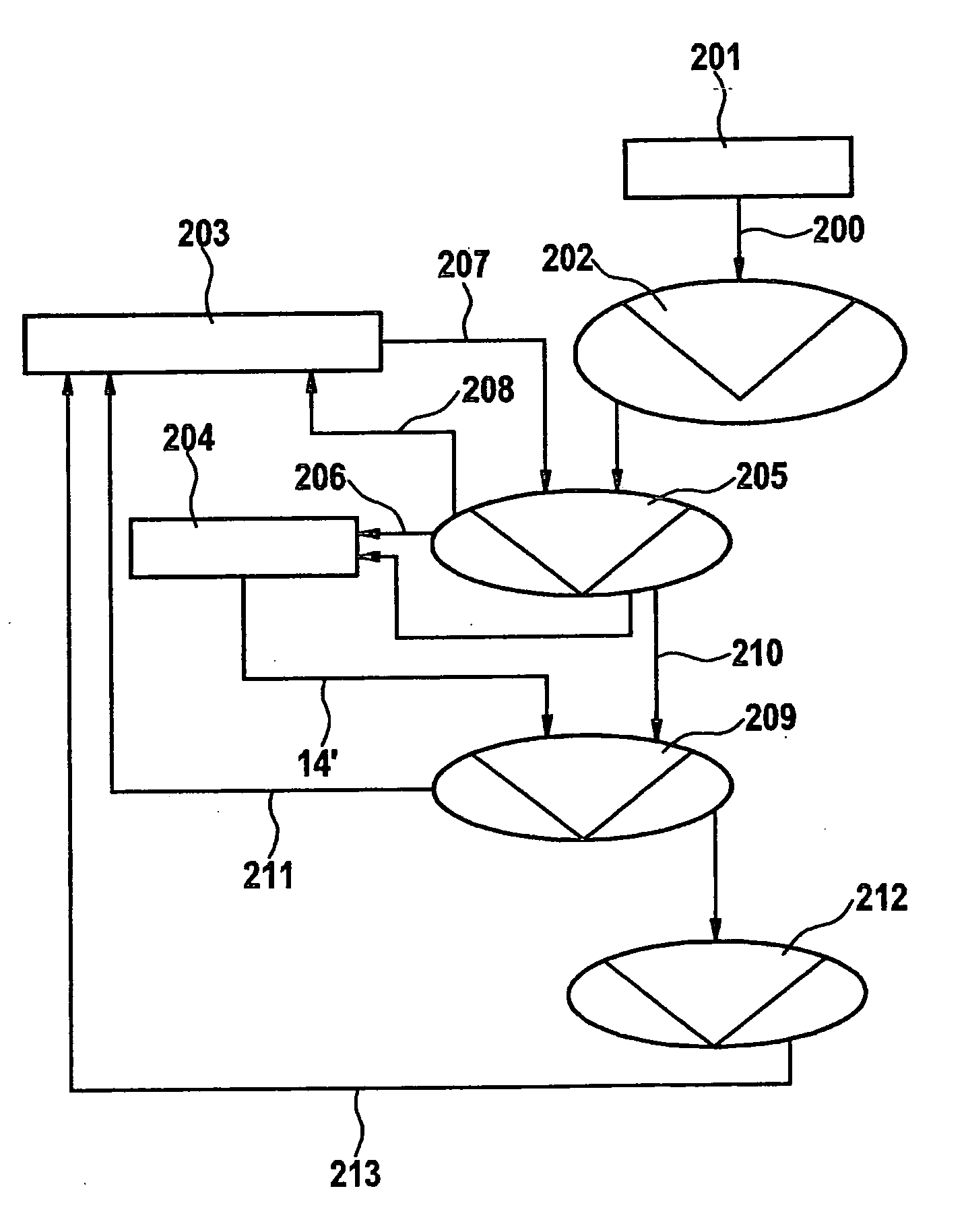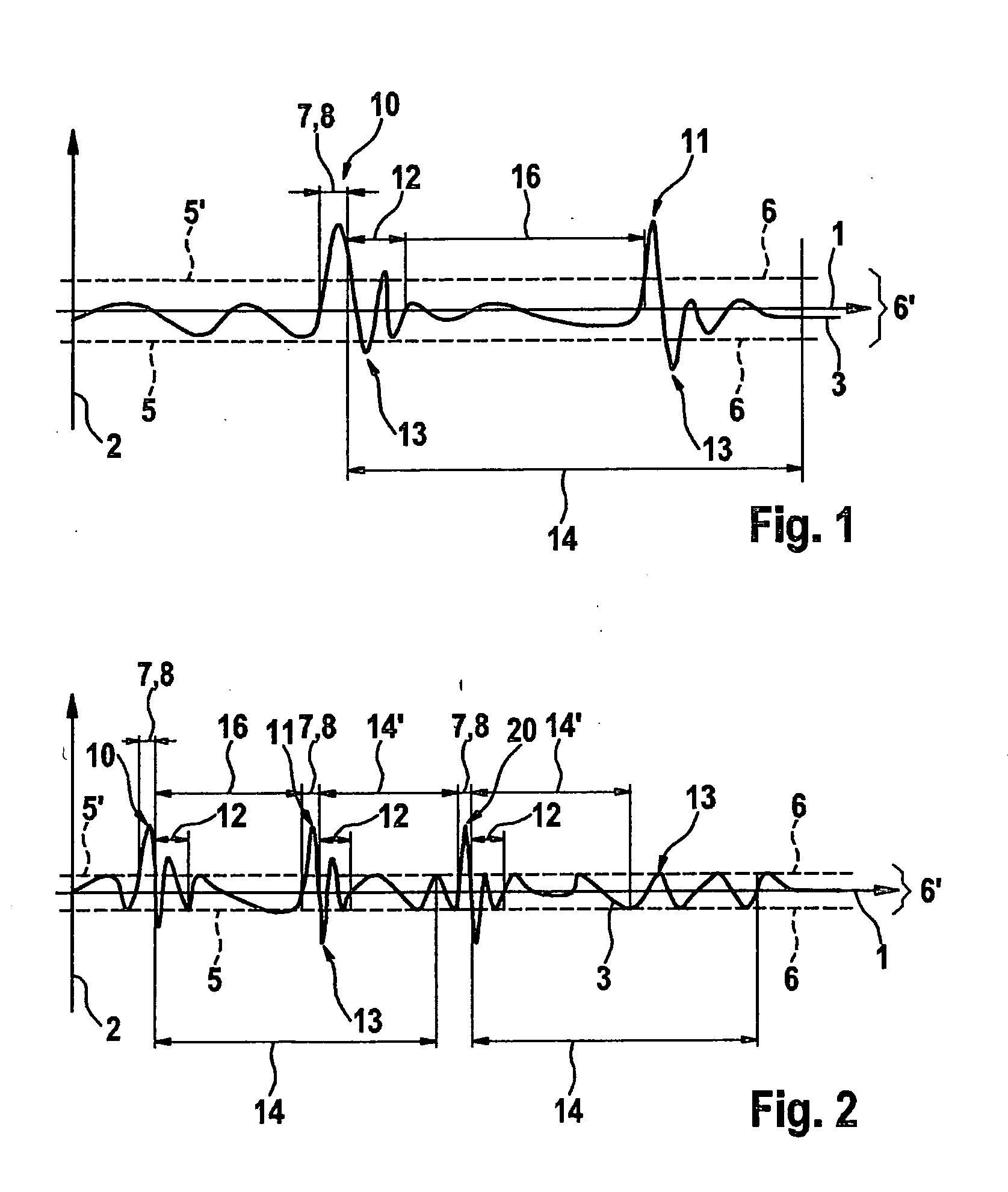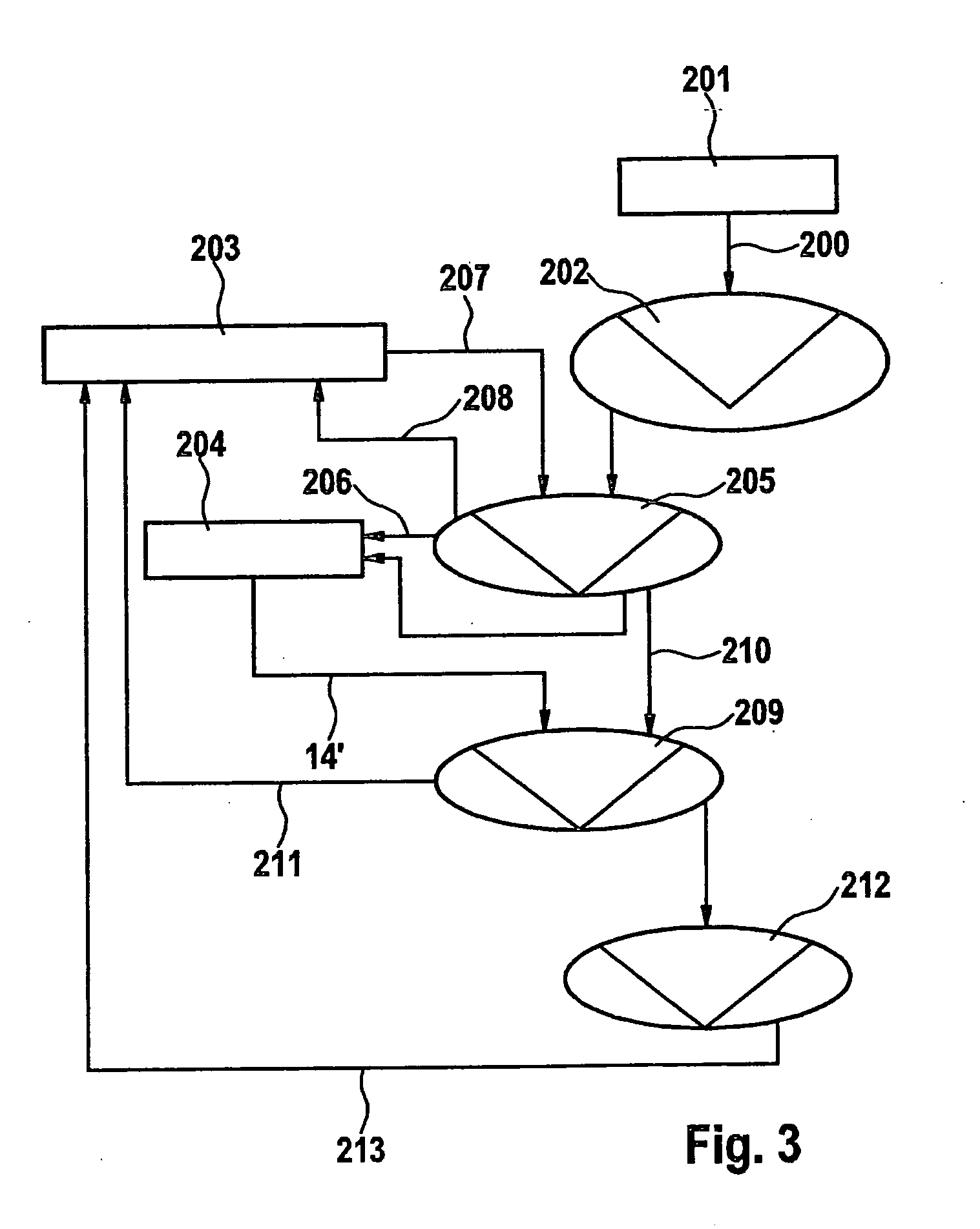[0003]The method according to the present invention according to Claim 1 has the
advantage over the related art that the reference time is set automatically as a function of the time characteristic of the input signals and thus, on the one hand, a considerably faster
response time and, on the other hand, an adaption of the input signal evaluation to the individual usage behavior of an input signal producer, for example a human user or a sensor controlled by the human user, is achieved. This is achieved by determining the
response time for future consecutive input signals which “belong together” as a function of the time interval between the first input signal and the second input signal, so that a predefined
response time must be assumed only between the first two input signals, which is adapted as early as in the following step to the time characteristic of the input signals. Thus, in the case of a user who, for example, performs double clicks relatively slowly, a longer response time is automatically set, while in the case of a user who performs the exemplary double clicks more rapidly, a correspondingly shorter response time is set. This is advantageous in particular if a distinction not only between a single input signal and a double input signal is to be achieved, but also when greater input signal sequences such as triple input signals, quadruple input signals, quintuple input signal, etc., are to be identified. In the case of N-fold input signals, the adaption of the response time after the second input signal is adapted for all subsequent further (N−2) input signals. In this case, the method according to the present invention also allows a considerable reduction of the response time to be achieved, since the time savings is equal to the product of the difference between the predefined response time and the adapted response time and the factor (N−2). Because the time until the arrival of the next input signal is “anticipated” by the method, it is also possible to filter out false input signals and thus to increase the accuracy of the identification of input signals. This is achieved in that, on the one hand, the adapted reference value is set equal to the time interval and, on the other hand, a tolerance range is set around the reference value in which the further input signal must arrive in order to be identified. As defined by the present invention, setting the reference time as a function of the time interval includes, in particular, that the reference time is equal to the sum of the value of the time interval and a tolerance value. The tolerance value includes in particular a constant and increases the adapted reference value by a relatively small amount; thus small differences in the time characteristic of the input signal are also detected.
[0011]According to another preferred refinement, it is provided that the identification of an input signal is performed only when the signal amplitude of the input signal exceeds a signal threshold value and / or only when the signal length of the input signal exceeds a time threshold value. In a particularly advantageous manner, the input signal thus must have a certain signal height and / or a certain
signal width for the identification of the input signal, so that the risk of misidentification due to false signals, for example due to external interference such as interfering
radiation, vibrations, etc., is reduced.
[0012]According to another preferred refinement, it is provided that, after the identification of an input signal, the
system waits for a down time before a subsequent input signal is identifiable. Typically the input signals perform a relatively short post-pulse oscillation, so that there is the risk that such a post-pulse oscillation exceeds the signal threshold value and is identified as another input signal. By waiting for the down time during which the post-pulse oscillations decay without identification, the risk of misidentification due to post-pulse oscillations is advantageously reduced.
 Login to View More
Login to View More  Login to View More
Login to View More 


